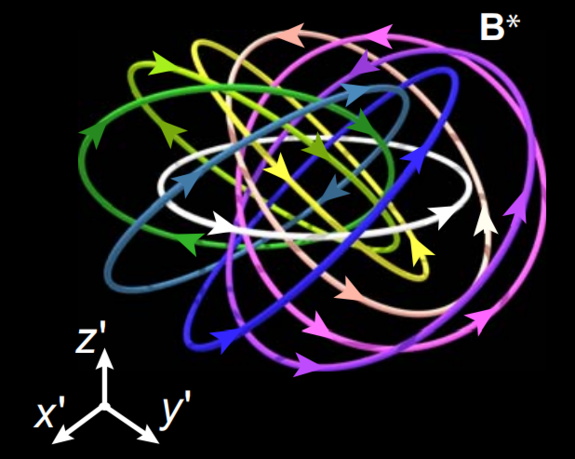What Are Skyrmions?
Reference Article

A skyrmion can be described as a swirling quasi-particle, a knot of twisting field lines, or a subatomic hurricane. They're also one of the most difficult physics concepts for humans to understand. That's because these nano-size disturbances are easiest to describe mathematically and, despite being known about for nearly 60 years, physicists have only recently started to find practical applications for skyrmions.
History of skyrmions
Skyrmions are named for British nuclear physicist Tony Skyrme, who first proposed their existence in 1961. His idea was to model subatomic entities like protons and neutrons using convoluted twists in the quantum field that all particles possess, according to the American Physical Society. While the concept was useful in many ways, such as accurately predicting some of the properties of fundamental particles like quarks and gluons, it struggled with other aspects of nuclear behavior.
The idea was eventually superseded by a theory known as quantum chromo-dynamics, which was more successful at modeling subatomic particles. But skyrmions have been revived by researchers working on magnetic fields, which can also be coaxed into forming vortex-like swirls.
In a magnetic skyrmion, the knotted magnetic field lines wrap around one another like key rings hooking into other key rings, creating a nanometer-scale shape that is impossible to pull apart without breaking the rings. In a magnetic field, the formation can drift from one spot to another, with the skyrmion making itself anew from lines at any given location.
What are skyrmions good for?
Because skyrmions are so small and stable, physicists are interested in controlling these particle-like entities for use in futuristic computers and electronic memory storage, according to Physics Today. Initially, researchers could only induce magnetic skyrmions in materials that had been cooled to very cold temperatures, but they are now routinely produced in room-temperature objects.
Since it takes relatively little power to maintain and electronically access data stored in magnetic skyrmions, engineers think these particles could make for very efficient memory-storage devices. An emerging field called skyrmionics is now dedicated to creating such next-generation appliances.
Skyrmions might also explain a weird and mysterious phenomenon known as ball lightning — a rare glowing orb that can appear during thunderstorms and skitter through the air, far outliving the more well-known jagged lightning. In 2018, a team proposed that the natural processes that somehow create the swirling knots that arise in skyrmions are the same ones that produce ball lightning.
Breaking space news, the latest updates on rocket launches, skywatching events and more!
Other researchers have begun reviving Skyrme's original models and have modified them to better explain concepts in nuclear physics, such as predicting the behavior and shape of nuclei.
Additional resources:
- Learn more about the use of skyrmions in computing technology, from Engineering & Technology.
- Find out more about skyrmions as the next generation of data storage, from Berkeley Lab.
- Watch What's a Skyrmion? From Science News.

Adam Mann is a journalist specializing in astronomy and physics stories. His work has appeared in the New York Times, New Yorker, Wall Street Journal, Wired, Nature, Science, and many other places. He lives in Oakland, California, where he enjoys riding his bike. Follow him on Twitter @adamspacemann or visit his website at https://www.adamspacemann.com/.
